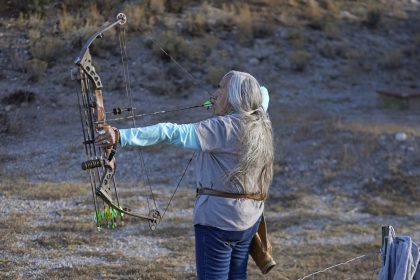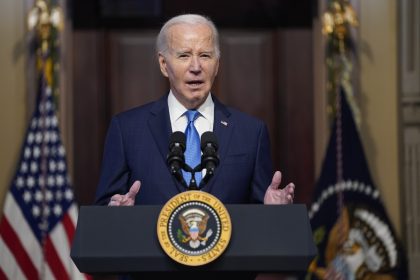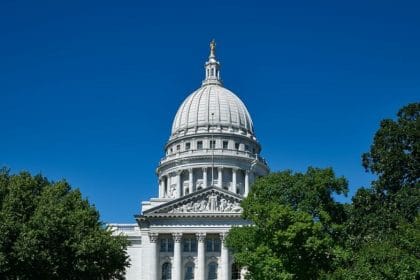Oregon Timber Talks Underway, Habitat Conservation Plan in Development

SALEM, Ore. — Oregon Gov. Kate Brown announced the first of a series of negotiations Wednesday in a collaborative effort between conservation leaders, fishing organizations and forestry representatives to adapt statewide forest practices.
Brown brokered an agreement between the conservation groups and timber products entities in February 2020 to forgo a divisive ballot initiative battle in favor of “collaboratively developed changes to forest practices,” instituted through legislative efforts, according to a release from the governor’s office. These efforts are aimed at creating new protections for sensitive aquatic species on over 10 million acres of private forestland in Oregon without impairing the state’s timber industry.
“In the past year––despite the disruptions of a global pandemic and historic wildfire devastation which made face-to-face meetings very difficult––this group has made steady progress in establishing common ground,” Brown said in a written statement. “Together, we can build a future for Oregon with healthy forests, fish, and wildlife and economic growth for our forest industry and rural communities at the same time.”
The negotiations between the stakeholders could be finalized in a statewide “Habitat Conservation Plan” from federal agencies for threatened and endangered species. State lawmakers hope the cooperatively developed plan will lead to long-term conservation benefits for the state’s wildlife while establishing greater regulatory certainty for landowners.
The state’s strategy for addressing the concerns and priorities of the involved parties was outlined in a memorandum which was mediated and released by the governor’s office. In the memorandum, the parties agreed they have incentive to reach a compromise on the “historically difficult issues” and that “any compromise must be built on mutual trust and respect.”
“Oregon’s forests are a precious resource that provide extraordinary beauty and recreational opportunities and a source of good, year-round employment and economic opportunity for small, family-owned businesses,” Heath Curtiss of Hampton Lumber said in a written statement. “Our goal is to ensure a vibrant and sustainable Oregon forest products industry, now and into the future, while avoiding the tragic community losses we saw in rural Oregon when federal forest harvest plummeted.”
Curtiss continued, “It will be delicate work, but if we focus on good science, specific problem statements, and the least burdensome measures to help remedy those problems, we’ll get there. It will require compromise on all sides, and a recognition that forestry is only one piece of the puzzle.”
Consequently, the parties hope to come to an agreement that ensures greater business certainty for forest landowners and industries and greater environmental certainty for the protection of threatened and endangered species and “aquatic resources,” according to the memorandum.
Simply put, the conservation entities want advanced protections for drinking water and wildlife and the business entities do not want these changes to compromise the state’s manufacturing infrastructure.
Further, the memorandum outlines a new process for resolving subsequent conflicts. By signing off on the memorandum, the parties agreed to stand down from pursuing legal challenges to the issues while the negotiation process is still ongoing.
“Oregon’s Forest Practices Act has always been based on science and it is my anticipation, as both sides have already agreed, science will drive this process,” Jim James of the Oregon Small Woodlands Association said in a written statement. “A successful outcome is extremely important to Oregon’s family forest owner community, who play a unique and proud role in Oregon’s wood products industry. I begin this process with an open mind, a strong appreciation for the current rules, and a willingness to listen and work to develop a science-driven Habitat Conservation Plan.”
Changes to Oregon’s forest practice laws and regulations will be discussed over a series of mediated meetings that will take place over the course of no longer than 18 months, according to the memorandum. The parties will work out and submit a finalized plan so that interim legislation implementing the agreements can be enacted as close to the state’s Feb. 2022 legislative session as possible.
Proposed legislation could include an “adaptive management component” that examines the efficacy of existing and future forest practice regulation, measures that decrease the risk to the state’s species and aquatic resources, and provisions for “alternative compliance paths” and mitigation of “financial impacts.” Additionally, the memorandum implements a tentative Dec. 2027 sunset for the legislation if federal agencies fail to approve a statewide habitat conservation plan in that time.
“Oregon’s fish, wildlife, and water resources face serious pressure from the human footprint on forests and the growing effects of climate change, but our policies have fallen too far behind the science,” Bob Van Dyk of the Wild Salmon Center said in a written statement. “This process is a chance to ensure a brighter future for vital public resources through improved forest practices while also providing more certainty to the regulated community.”






















